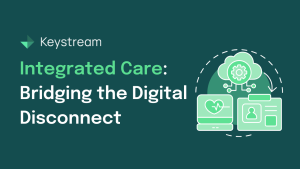03.08.2023
Crafting a Comprehensive Training Strategy
Introduction
Implementing an Electronic Patient Record (EPR) system within the NHS goes beyond merely adopting the latest technology. Success lies in establishing a comprehensive training strategy that effectively prepares the workforce to use the new system. This article explores 5 key components of a successful training strategy for EPR implementations.
Role-Based Training
EPR training needs to reflect the distinct roles within the NHS. A consultant, a nurse, or an administrative staff member each interact with the EPR system differently, and training should reflect these unique needs. By tailoring training to specific roles, we ensure that staff are equipped with skills relevant to their job functions, enhancing their confidence and proficiency in using the EPR system. A comprehensive Training Needs Analysis will inform the strategy and ensure that training is as role specific for each staff group as it possibly can be.
Blended Learning Approaches
Different people learn in different ways. Therefore, a blend of learning methods, from traditional face-to-face instruction to hands-on workshops and e-learning modules, caters to these varied learning styles. It also offers much-needed flexibility in a bustling healthcare environment. For example, e-learning modules can be accessed on-demand, accommodating busy schedules and allowing staff to learn at their own pace. However, it is important to understand which workflows should be delivered as hands on exposure to staff. This ensures that the knowledge and awareness of any complex workflow is fully understood by those responsible for entering information into the system.
Super Users and Champions
Super Users and Champions play a pivotal role in the training strategy. These are staff members from each department who receive additional training, allowing them to provide support to their colleagues. But it’s important to remember that this strategy requires careful consideration.
Becoming a Super User isn’t just about attending a couple of extra training sessions. These individuals will need time away from their regular duties, especially during the critical go-live phase, to provide the level of support expected of a Super User. This may involve difficult conversations and decisions about making them supernumerary at go-live and providing backfill when they’re engaged in extra training. A gold standard approach would see Super Users fully equipped and enabled to provide effective support, but this must be balanced against operational demands.
Continuous Learning and Support
Training is not a one-time event but a continuous process. With the constant evolution of technology and the inevitable refinement of system usage, ongoing learning opportunities are critical. Regular refresher courses, user group meetings, and readily accessible online resources and support are essential. Support is particularly crucial during the initial period following go-live, when users are adapting to the new system. Having a robust approach to ‘at the elbow’ support requires careful consideration and it is important to have SME’s in place at go-live in areas where we know there could be bottlenecks and potential misunderstanding of processes. Utilising your super users to lead the floorwalking support is something that should be considered but only if they have been given the appropriate level of training and support, themselves.
Evaluation and Adaptation
Finally, a feedback and review mechanism should be established to assess the effectiveness of the training strategy continuously. This approach allows for early identification of potential knowledge gaps and provides opportunities for necessary adjustments. Feedback from users and training evaluation metrics should guide the iterative refinement of the training strategy, which is essential for a smooth transition to Business As Usual.
Conclusion
Implementing an EPR system is a complex process involving change management, workflow transformations, and enhancement of patient care. The key to success lies in a comprehensive training strategy that is tailored, flexible, and iterative. Such a strategy ensures the workforce is confident and competent in using the EPR system, paving the way for a successful digital transformation within the NHS.









